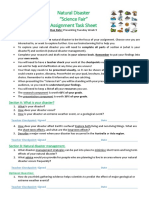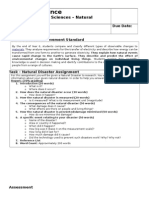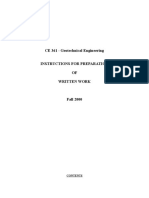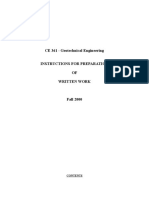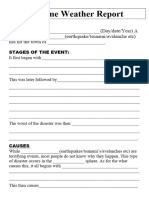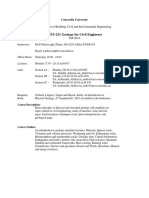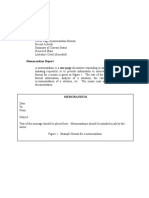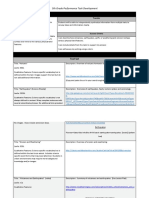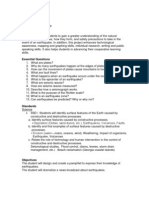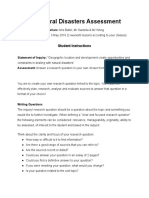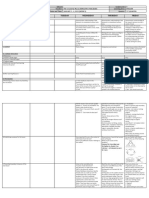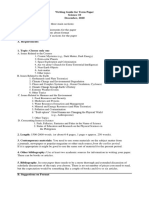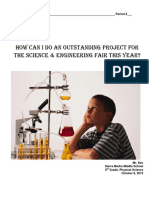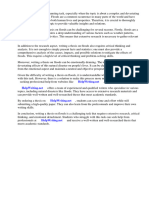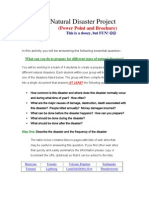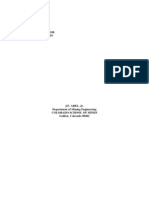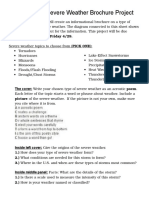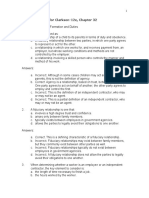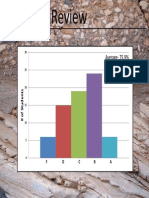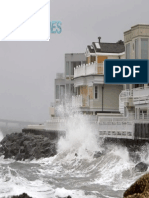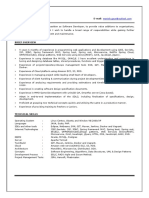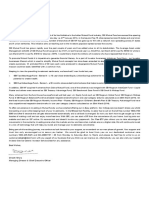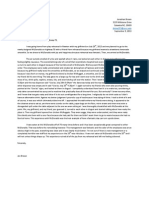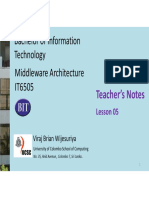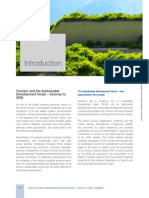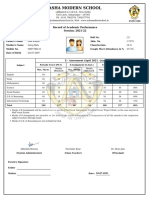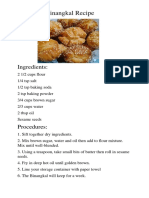GSC 350: Natural Disasters Research Project Assignment
(to be completed by teams of 3 or 4 students)
*Topics must be selected on or before Thursday, October 24th. E-mail your top three choices to:
smorrish@csupomona.edu
**Outline and synopsis of report is due Thursday, November 7th
*** Written report is due on day of oral presentation December, 3rd or 5th
General Assignment:
Students shall conduct research on a natural disaster of their choice. An incomplete list of topics is
provided on the course blackboard. Please choose one of these or feel free to research a different
pertinent topic of your own choice. Some of the volcanoes record a protracted history, so students may
wish to focus on the history rather than just one event. Similarly, students may describe an earthquakeprone region rather than just one historical earthquake. Research results shall be summarized in a
concise, well-illustrated written report and an oral PowerPoint presentation to your classmates and
instructors.
Required Elements of the Final Written Report
Follow these instructions carefully (140 Pts):
(1) Three pages of text typed, 12 point font, 1 line spacing, 1 inch margins, written succinctly in your
own words. Use professional English with correct grammar and punctuation. No text speak
please.
(2) Additional space will be occupied by illustrations, figure captions, and bibliography.
(3) Choose a few (minimum of four) illustrations that most effectively display pertinent features of your
chosen topic.
(4) Each illustration must be numbered in sequence and accompanied by a short descriptive caption; e.g.
Figure 1. written caption, Figure 2. written caption, etc. Each caption also must contain a source
citation for the illustration; use parentheses: (Author last name, date).
(5) Each illustration must be directly cited at least once within the text at a place where the discussion is
appropriate. Use parentheses (Figure 1), etc when citing the illustration in the text.
(6) The introduction paragraph should capture the readers attention and bring out the location of your
chosen disaster.
(7) The body of your text obviously should inform the reader what happened. However, one required
component is scientific description of the driving mechanism(s) behind the disaster. This might
include plate tectonic setting or local plate motions, prevailing weather or atmosphere conditions,
historical events leading up to the disaster, pre-existing adverse geologic conditions, human-induced
effects, unfortunate geographical setting, etc. Also, try to emphasize any important lessons learned
by scientists that might reduce the hazard during future disasters.
(8) Conclude with a succinct paragraph.
(9) List all of your research sources in a bibliography. Standard style is to state the following
information in sequence: author last name, author first initials, year, source (e.g, publication or web
address (include date accessed for web sources)), page number(s). List the authors alphabetically.
(10) For additional visual appeal, intersperse your illustrations within the text rather than tacking them
on at the end as an appendix.
(11) Bind your report with a cover page that includes the title, names of team members, name of course
and instructor, date. Leave room for a pertinent image as a frontispiece on your title page. This
image does not require a caption, but should be described and cited at the close of your
bibliography.
�Required Elements of the Final Oral Presentation (100 Pts):
(1) PowerPoint format, compatible with Windows XP operating system.
(2) Eight to ten minutes in length, allowing for a few minutes of questions and discussion afterward.
(3) All team members must speak.
(4) The audience should be able to clearly distinguish introduction, body, and conclusions sections of
your presentation.
(5) Include map(s) to highlight the geography of your topic.
(6) As seen in lecture, the body of your talk must bring out the science behind the disaster (e.g., driving
mechanisms and specific observations). Do not simply focus on death and destruction!
(7) Illustrations must be presented with unique captions and appropriate citations.
(8) The ideal presentation will utilize a balance of illustrations and text slides.
Research Guidelines:
Begin with your textbook and an Internet search. Both provide basic summaries and relevant
illustrations; additional bibliographic sources of information should also result from this preliminary
research. To earn a good grade, students are expected to demonstrate that they have carefully researched
a variety of reports written on the topic.
A crucial part of this assignment is to synthesize the information in your own words. Anyone can
copy and paste information from the web, but its unethical to present this material as your own work.
A detailed bibliography of multiple sources is required. Each image you present should be accompanied
by a short descriptive caption (Figure #1 etc.) that you have written in your own words. This caption
must also contain a direct citation of the source from which the image was borrowed.
Grading Criteria For Written Report:
10 pts Outline and one-paragraph Synopsis of reportdue November 7th
50 pts Organization and Presentationintroduction, body, and conclusions; adherence to format
specifications; quality of illustrations
60 pts Scientific Content-- technical accuracy, depth and breadth of coverage, quality of descriptions
20 pts Bibliography--abundance of data sources, depth of research
140 Points Total
Grading Criteria For Oral Presentation:
25 pts Organization
25 pts Quality of Slides
25 pts Technical / Scientific Content
25 pts Clarity and Style of Presentation
100 Points Total
(+ 10 pts Peer Review)
(250 Total Points; equivalent to 25% of your course grade)
